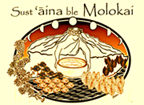Wednesday, November 30th, 2011
_0.jpg)
Community Contributed by Glenn I. Teves, County Extension Agent, UH CTAHR
_0.jpg)
If you hear something repeatedly, it starts to sink in after a while. It’s the same thing for an old idea whose time has come again. Victory gardens are an old idea believed to have started in England in the 1400s. Word spread throughout the land by messengers on horseback that the Spanish were planning to attack England, and that citizens should plant gardens and store their food. In addition, they should save their metal for the possible war effort.
In the building of our nation, immigrants were encouraged to bring their seeds with them. The nation was short of seeds, and many of the native crops such as corn and squash hadn’t caught on yet. In our early beginnings, the main source of seed was none other than politicians who would carry them to the places they visited as a way to promote their self-interests. Finding seeds adapted to the different climates was sometimes a challenge, but gardeners and small farmers would develop their own varieties through selection and sharing of seeds from nearby communities.
During World War I, the National War Garden Commission was established in England to promote the idea of growing gardens as a way support the war effort. During World War II, this same message was spread throughout both America and Europe, and the victory garden was revived. As a result, 40 percent of the vegetables produced in our nation’s garden came out of these 20 million gardens.
In the early 1940s, the U.S. Department of Agriculture objected to then first lady Eleanor Roosevelt’s efforts to plow part of the White House lawn to plant her victory garden, fearing this would hurt the food industry. Victory gardens enabled more food and supplies to be shipped to our troops. Vegetables were bartered for other foods and ration stamps, the currency during the war time to purchase sugar, butter, milk, cheese, eggs, coffee, meat and canned goods as well as gas. Information on gardening came from sources such as the Saturday Evening Post, Life Magazine, Good Housekeeping, International Harvester and Beech-Nut Packing Company, as well as seed companies and the government.
In March 2009, this effort was renewed when first lady Michelle Obama planted a 1,100 square-foot garden at the White House. Last week, Ma’o Farms of Waianae captured the national stage when the first lady visited; she emphasized the importance of agriculture and education, and of connecting what you do to the rest of the nation. At Ma’o Farms, predominantly Hawaiian youth are being trained in organic crop production and farm management, and also have opportunities to attend community college to further their education.
In times of uncertainty, such as what we face today, it’s always nice to have a little insurance in the form of food growing in our backyard. This form of insurance is the ability to provide for yourself and your family, and having the knowledge to produce and preserve your own food is an investment in the future of your family. As Henry Ford once said, "No unemployment insurance can be compared to an alliance between man and a plot of land."









_0.jpg)
_0.jpg)



